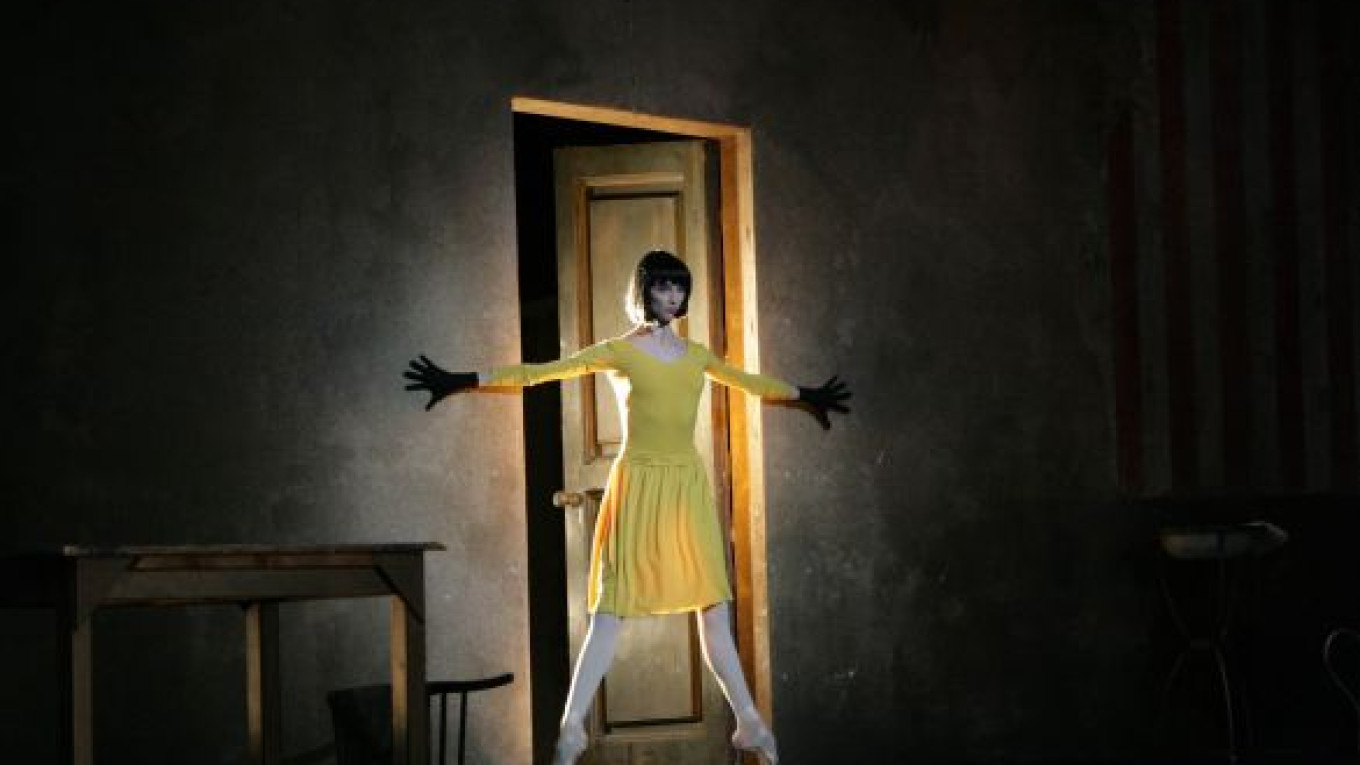Thanks to the grand old man of French ballet, 86-year-old Roland Petit, the Bolshoi Theater has finally added something really worthwhile this season to its ballet repertoire.
The beginning of June saw the Bolshoi premiere of Petit’s one-act, two-character “Le jeune homme et la mort” (The Young Man and Death), a work originally created in Paris in 1946. The result was truly spectacular and, on opening night, received an ovation that lasted nearly as long as the 18-minute ballet itself.
Petit is no stranger to the Bolshoi. He was one of the very few foreign choreographers to work there in Soviet times, creating “La rose malade” for the company in 1973 and restaging an earlier ballet, “Cyrano de Bergerac,” in 1988. Petit returned to the Bolshoi in 2001 to choreograph a second original work for the theater, “The Queen of Spades,” which he combined with a brief earlier work titled “Passacaille.” Two years later he came back again and added his full-length “Notre Dame de Paris,” a ballet dating from 1959.
The libretto of “Le jeune homme et la mort” is the work of Jean Cocteau, whose synopsis tells the following:
“In a studio, a young man waits alone.
A girl, who is the cause of his anguish, enters.
He rushes toward her. She pushes him away. He implores her.
She insults and ridicules him and runs away. He hangs himself.
The room vanishes. Only the hanging body remains.
Over the rooftops, death arrives in an evening dress.
Death takes off her mask: It is the girl.
Then she places the mask on her victim’s face.
Together, they go off across the rooftops.”
The story is very much a product of Cocteau, who was obsessed with death and looked upon it as “a desirable deliverance,” and of early post-World War II Paris, where, for many, rejoicing at victory had given way to dark thoughts about man’s existence and the absurdity of life. Though now far-removed from the context of its premiere, the ballet can still be admired as a gripping piece of dance drama.
Petit originally choreographed the ballet to the American jazz standard “Frankie and Johnny.” But Cocteau insisted on a classical accompaniment. The eventual choice of music was Italian composer Ottorino Respighi’s orchestration of Johann Sebastian Bach’s Organ Passacaglia in C Minor, which perfectly fit Petit’s 18 minutes of dance, as well as the style of his choreography and the drama itself.
For the Bolshoi production, Petit rather surprisingly cast Ivan Vasilyev as the Young Man. Already famous here and abroad for his virtuosic leaps and turns (sometimes, of late, seeming more like a circus act than serious dancing), the 20-year-old Vasilyev has shown little talent as an actor. But taken in hand by a master like Petit, he danced and acted the part of the Young Man with enormous skill, though perhaps he might have dug more deeply into the character’s spiritual torment and despair.
Wearing a black wig, prima ballerina Svetlana Zakharova, as Death, was almost unrecognizable until those marvelous long legs of hers went into action. She danced with frightening intensity, perhaps losing sight a bit of the supposed “girlfriend” at the ballet’s beginning, but meticulously playing out the femme fatale as it progressed toward its tragic conclusion.
Following “Le jeune homme et la mort” came a reprise of “The Queen of Spades.” In the central roles of Gherman and the Countess, Nikolai Tsikaridze and Ilse Liepa seemed every bit as technically accomplished and even more caught up in the drama than they did in their Golden Mask award-winning performances at the premiere nine years ago.
Taken together, the two Petit ballets added up to a very powerful evening of dance. But as their combined length is little more than an hour, the Bolshoi apparently thought it necessary to add a third ballet to the evening’s bill. The choice fell to George Balanchine’s “Serenade,” the very first ballet created by the choreographer following his arrival in the United States in 1933.
In the three years the Bolshoi has been performing “Serenade,” its dancers have never come close to capturing an authentic Balanchine style. And at the performance that preceded the premiere of “Le jeune homme et la mort,” they seemed even more at sea than I recall from the past, the corps de ballet raggedly executing choreography that demands the utmost in precision and Yekaterina Krysanova — a superb exponent of other roles — lacking the presence and power required of the ballet’s lead principal. Too bad the Bolshoi has consigned Petit’s “Passacaille” to the dustbin; it would surely have made a better start to the evening than “Serenade.”
No further performances of “Le jeune homme et la mort” (Yunosha i smert) are scheduled for the current season, but it seems certain to return once the Bolshoi opens its doors on the new season in September.
A Message from The Moscow Times:
Dear readers,
We are facing unprecedented challenges. Russia's Prosecutor General's Office has designated The Moscow Times as an "undesirable" organization, criminalizing our work and putting our staff at risk of prosecution. This follows our earlier unjust labeling as a "foreign agent."
These actions are direct attempts to silence independent journalism in Russia. The authorities claim our work "discredits the decisions of the Russian leadership." We see things differently: we strive to provide accurate, unbiased reporting on Russia.
We, the journalists of The Moscow Times, refuse to be silenced. But to continue our work, we need your help.
Your support, no matter how small, makes a world of difference. If you can, please support us monthly starting from just $2. It's quick to set up, and every contribution makes a significant impact.
By supporting The Moscow Times, you're defending open, independent journalism in the face of repression. Thank you for standing with us.
Remind me later.


